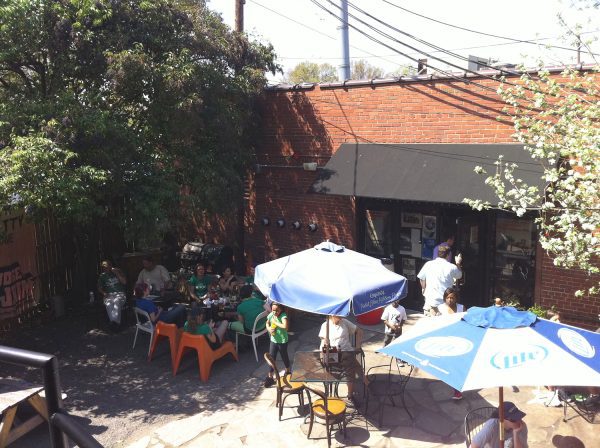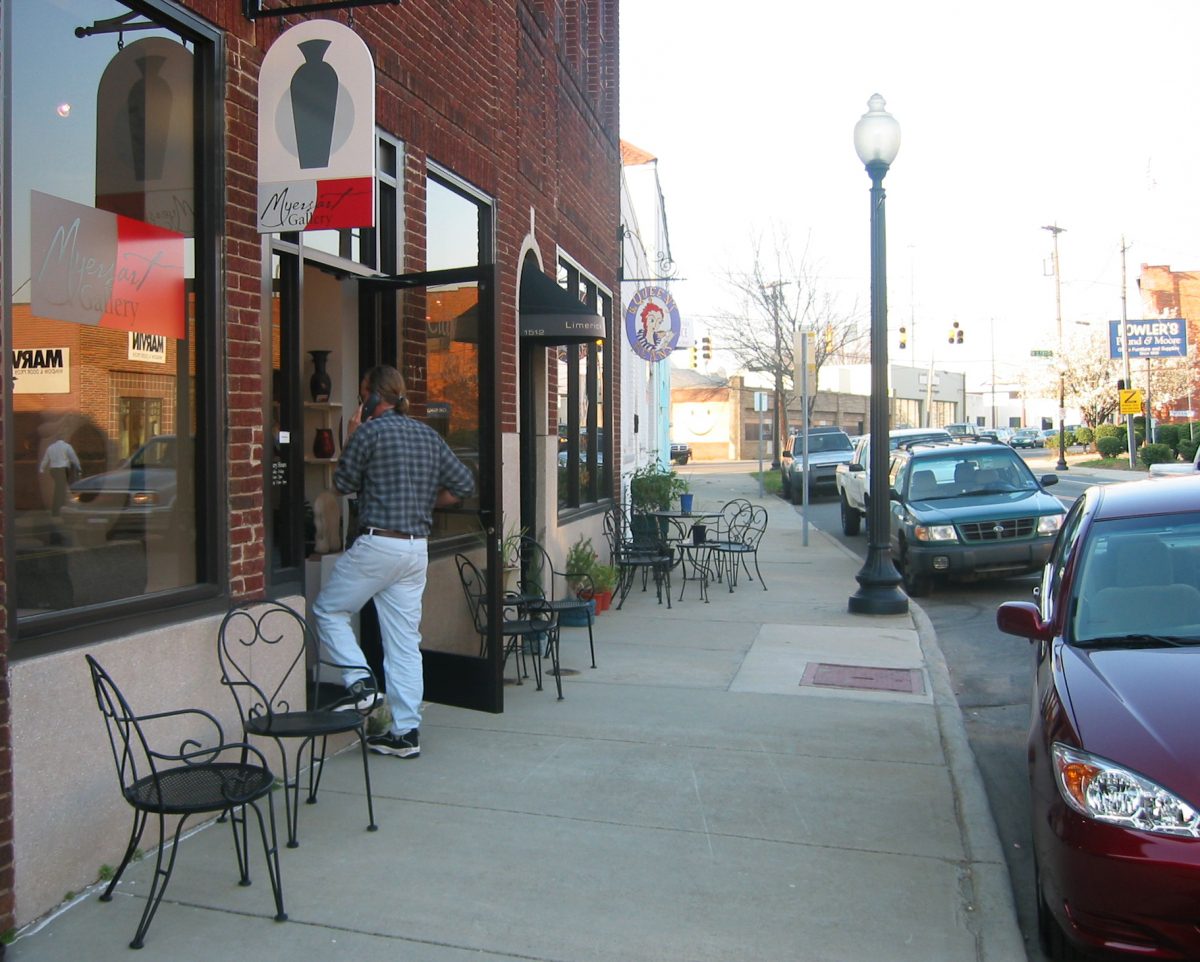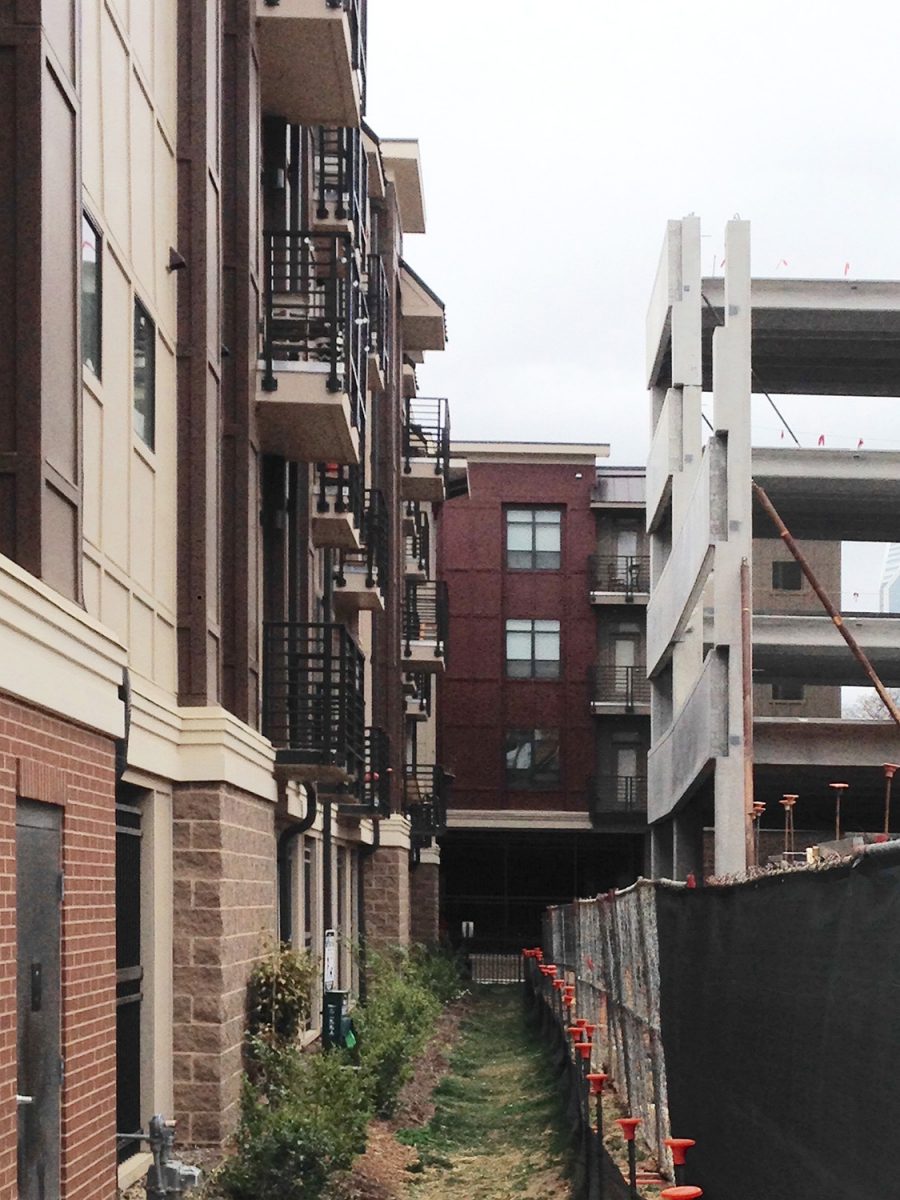Losing a spot of urban magic that’s not likely to be replaced

[highlightrule] “We mourn the small stores lost and the neighborhood neutered, even as we recognize that cities depend for their future on new ways of selling and buying and living. Cities often produce whatever the next wave of social change is going to be, and then violently reject it for altering the nature of the city. … The old city recoils, even as it is, inevitably, remade.”
—Adam Gopnik, “Urbanism and its Discontents,” The New Yorker, Oct. 5, 2015 [/highlightrule]
The agonizing continues. Cool and trendy old stuff versus shiny new development. NoDa, Plaza-Midwood, Cherry and South End neighborhoods all epitomize this struggle, in which property owners with a lot of money seem to always win over creative folks who make art and other cool stuff in cheaply rented space in older buildings.
As is well-known by now, the Common Market, a favorite neighborhood store and deli in South End, will be demolished along with other, older buildings nearby in the Camden Road-South Tryon Street triangle near the light rail line. Several writers (I’m one), have written about this allegory of gentrification with its good and not-so-good aspects, and most of the community angst has been about the loss of that neighborhood hang-out in particular, and the loss of older buildings that help create character in general.
I know the area intimately. My wife, artist Linda Luise Brown, and I have rented studio space in those same century-old buildings for 25 years, beginning when the area was a scary, desolate area, and when only a few artists and designers dared set up shop in the tiny handful of brick buildings fronting Camden Road.
A change, and then magic
Then, only a few years ago, we witnessed the magic transformation that drew people to that location like bears to honey.
As wonderful as Common Market is, it’s not the interior of the store that’s special. It’s the intimate exterior courtyard. It is unique in our ever-expanding metropolis. No bigger than a “great room” in a suburban mega-mansion, that exterior space is the perfect “outdoor room,” the type of communal urban space beloved by urban designers and the general public alike.
The courtyard’s small size belies its spatial subtlety. It is best approached from Camden Road. The space itself is hidden, with just a glimpse of something down a side alley as you walk along the street. That glimpse pulls you back … just what is down there? Toward the end of the alley the courtyard comes into view in stages until all is revealed. It’s a complete urban surprise—moveable chairs and benches, tables, trees, open and covered areas and a stage area. And most important, it is enclosed on all sides, giving it an intimate scale with doors to the store and other buildings opening off the space. A black steel staircase leads up the back of the building containing our studio, providing a series of elevated perches for hipster watching.
For years that space was bare soil, a deserted fragment of the city used only by my wife, myself and a few others. As struggling art galleries and coffee shops on Camden Road came and went, it occasionally hosted some small events, but for decades its potential went largely unrecognized, until owner Gaines Brown and the then-new renters, the Common Market, turned it into the jewel it is today.
Once it’s gone, in about 12 months, a genuine piece of urban magic will be lost forever. And Charlotte has almost no other such intimate, enclosing spaces to replace its role in our urban scene.
 As a tenant who has used that space for a quarter century, I mourn its loss deeply. But as an experienced urban designer, I have come to recognize the near-inevitability of that destruction. However much people howl over the loss of “local character” there or in NoDa or along Central Avenue, these kinds of redevelopment outcomes will always predominate, because the U.S. system prioritizes property rights over community values. In the U.S., property is a commodity to be traded for private gain in the search for its “highest and best use” (i.e., how to get the most money from the land or building). That bedrock American value of property rights goes back to the founding of this nation, and I don’t know many people who would want to change it.
As a tenant who has used that space for a quarter century, I mourn its loss deeply. But as an experienced urban designer, I have come to recognize the near-inevitability of that destruction. However much people howl over the loss of “local character” there or in NoDa or along Central Avenue, these kinds of redevelopment outcomes will always predominate, because the U.S. system prioritizes property rights over community values. In the U.S., property is a commodity to be traded for private gain in the search for its “highest and best use” (i.e., how to get the most money from the land or building). That bedrock American value of property rights goes back to the founding of this nation, and I don’t know many people who would want to change it.
However, it is not a universal attitude, but an American one. For instance, Article 14 of the German Constitution says: “Property entails obligations. Its use shall also serve the public good[1].” Under that country’s more sophisticated planning system, issues of community character and public interest have a stronger role to play in formulating development plans. There, the buildings and spaces that contribute to a special sense of place in a community can be much more protected, as neighborhoods redevelop. But those provisions are supported by a different kind of democracy, with different values and different modes of taxation, representation and so forth.
What redeveloping neighborhoods need
This focus on the importance of a community’s urban space as opposed to solely caring about buildings leads to three other important points:
- All Charlotte’s redeveloping areas are in older neighborhoods with some cheap-to-rent old buildings, an essential element for redeveloping. But those areas also possess a good infrastructure of public space: connected streets, short blocks, sidewalks in most places and a sense of spatial enclosure created by buildings lining both sides of fairly narrow streets. Those urban spaces are essential for any area to redevelop successfully. They underpin all new development.
- Charlotte has a grave shortage of other areas where those conditions exist. This raises big questions about the city’s ability to support the continuing migration of creative artists and designers who, as they search for new districts to colonize, are vital to the process of urban regeneration. We were a small city in the late 19th and early 20th centuries, and most of the close-knit urban heritage created then was torn down for parking lots or other suburban-style development during the urban upheavals of the 1950s through the 1980s. Today many of our “old” buildings are 1950s-era light industrial boxes along wide streets with no sidewalks, no interconnected blocks and no sense of pedestrian scale or spatial enclosure. We can fix the buildings (as several breweries have done, for example), but we can’t improve the spatial infrastructure without considerable—and expensive—civic investment.
- Charlotte’s zoning rules have no strong provisions for well-designed public open space in new development. There are abstract ratios, setbacks, numerical formulas and areas, but no design vocabulary for public spaces that could produce a public realm as rich as the Common Market’s tiny fragment. What we get, instead, are dull “left-over” spaces between buildings, or at best a plaza on the street with a few generic shops.
Compare the photo of Common Market’s courtyard with the image (below, right) of a typical piece of dead space between new developments just one block away. Living rooms, bedrooms and balconies stare at the blank walls of a parking deck, while the inhabitants breathe exhaust fumes.
Zoning rules require only that buildings be set a few feet from the property line, and developers and designers of the project have not demonstrated much interest in, or skill at, manipulating urban space for positive benefit. The space between the buildings is truly wasted space, left over after the architects max out the development area of each site for their clients. Designers in this instance, and elsewhere in South End, have abdicated any duty to care for the space outside the walls of their buildings
In the U.S. we are in a difficult position to try to save much of community value in the face of big-money development. Our legal and cultural systems don’t put much importance on things whose worth comes from being beloved by local people. Private gain almost always outweighs public good. Zoning rules are helpless, and hapless, to produce or protect much of lasting community value. And architects and developers just don’t seem to care about anything beyond the limits of their individual projects.
There is a different way, although it’s too late for South End. Redeveloping districts must have a well-designed “public space plan” created by the city with the help of property owners, possibly with nonprofits as catalysts. Such plans must be more than the usual wishful thinking and good intentions that visiting consultants sprinkle about. To have teeth, these open space plans must be incorporated into zoning ordinances that require community spaces built in accordance with the plan’s principles. Urban designers know how to do this; we do it in other towns and cities.
We’ve left it far too late to save many old buildings and spaces in Charlotte. But we can, if we really care, make new ones that will become historic gems, valued by future generations.
David Walters is an architect and town planner and a UNC Charlotte professor emeritus who recently retired as director of the university’s Master of Urban Design program. Opinions in this article are those of the author and not necessarily those of the UNC Charlotte Urban Institute or the University of North Carolina at Charlotte.
[1] http://www.gesetze-im-internet.de/englisch_gg/englisch_gg.html#p0079